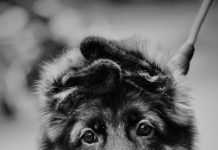Building a strong training bond with your puppy is one of the most rewarding experiences for both you and your furry friend. It sets the foundation for a lifetime of companionship and mutual understanding. As you embark on this journey, it’s important to approach training with patience, love, and consistency. In this guide, we’ll explore practical strategies and heartfelt tips to help you nurture a deep and trusting relationship with your puppy. Whether you’re a first-time pet owner or a seasoned dog lover, these insights will help you create a positive and engaging environment that encourages your puppy to learn and thrive. Let’s dive in and discover how to transform your training sessions into joyful moments of connection and growth.
Establishing Trust Through Consistent Routines
Creating a sense of security and predictability for your puppy is essential for nurturing a strong training bond. Puppies thrive on routines because they provide a structured environment where your furry friend knows what to expect. This predictability helps in reducing anxiety and builds confidence. Consistency is key; when your puppy knows that certain activities happen at specific times, such as feeding, walks, or training sessions, it becomes easier for them to understand and adapt to your expectations.
- Feeding: Serve meals at the same times each day to establish a dependable routine.
- Walks: Schedule regular walks to help your puppy anticipate outdoor time, which aids in training and exercise.
- Training Sessions: Conduct short, consistent training sessions to reinforce learning and keep your puppy engaged.
- Bedtime: Create a calming bedtime routine that signals the end of the day, helping your puppy wind down.
By incorporating these elements into your daily life, you foster an environment of trust where your puppy feels safe and understood. This bond becomes the foundation for successful training and a joyful companionship.
Using Positive Reinforcement to Encourage Good Behavior
Building a strong training bond with your puppy is akin to nurturing a budding friendship, where positive reinforcement plays a pivotal role. This technique, rooted in rewarding desired behaviors, helps foster a nurturing and trust-filled relationship. By consistently recognizing and rewarding your puppy’s good behavior, you create an environment where they feel secure and motivated to learn. Here are some key points to consider:
- Timing is crucial: Ensure you reward your puppy immediately after they exhibit the desired behavior. This helps them associate the reward with the specific action.
- Consistency matters: Use the same cues and rewards to prevent confusion. This consistency helps your puppy understand what is expected of them.
- Variety in rewards: Mix up the rewards to keep your puppy engaged. Treats, verbal praise, and affection are all powerful motivators.
- Patience is key: Remember, puppies are learning and mistakes are part of the process. Encourage them gently without frustration.
By embracing these techniques, you’ll not only teach your puppy good manners but also lay the foundation for a lifelong bond filled with mutual respect and love.

Creating Engaging Playtime for Mental and Physical Growth
Playtime is not just a fun activity for your puppy; it is a crucial component for their mental and physical development. To make the most out of these playful moments, consider incorporating activities that stimulate both their body and mind. Here are some ideas to help you create a more engaging play environment:
- Interactive Toys: Invest in toys that challenge your puppy’s cognitive skills. Puzzle toys or treat-dispensing toys are excellent choices that keep them entertained while also enhancing problem-solving abilities.
- Obstacle Courses: Set up a mini obstacle course in your backyard or living room using household items like cushions, boxes, and tunnels. This not only improves their agility but also boosts their confidence as they navigate through the course.
- Scent Games: Hide treats around the house or yard and encourage your puppy to sniff them out. This engages their natural hunting instincts and sharpens their sense of smell.
By thoughtfully incorporating these activities, you not only foster a deeper connection with your puppy but also contribute to their holistic growth. Remember, the goal is to make playtime a joyful yet educational experience that strengthens your bond.

Understanding Your Puppys Body Language for Better Communication
Recognizing your puppy’s body language is key to developing a deep, trusting relationship. Puppies communicate a lot through their physical gestures, and understanding these cues can enhance your training sessions significantly. Here are some common signs to look out for:
- Tail Wagging: While often associated with happiness, a wagging tail can also indicate excitement or even anxiety. Pay attention to the speed and position of the wag to better understand your pup’s mood.
- Ear Position: Ears that are perked up usually signal curiosity or attentiveness, while ears laid back can indicate fear or submission.
- Body Posture: A relaxed, loose body suggests comfort and confidence, whereas a rigid stance might mean your puppy is feeling threatened or on alert.
- Facial Expressions: Look for soft eyes and a slightly open mouth for signs of relaxation. Tight lips and wide eyes can be signs of stress or discomfort.
By tuning into these subtle signals, you can tailor your training approach to meet your puppy’s emotional needs, fostering a bond built on mutual understanding and respect. Remember, your puppy is constantly communicating; it’s up to you to listen and respond appropriately.
The Conclusion
building a strong training bond with your puppy is a journey filled with patience, understanding, and mutual respect. By consistently applying the techniques and tips we’ve discussed, you’re not only teaching your puppy valuable skills but also nurturing a lifelong relationship rooted in trust and love. Remember, every puppy is unique, and the key to success lies in celebrating small victories and learning from each experience together. As you continue this rewarding journey, cherish the joyful moments and challenges alike, knowing that each step strengthens the special bond you share with your furry friend. Happy training!
















